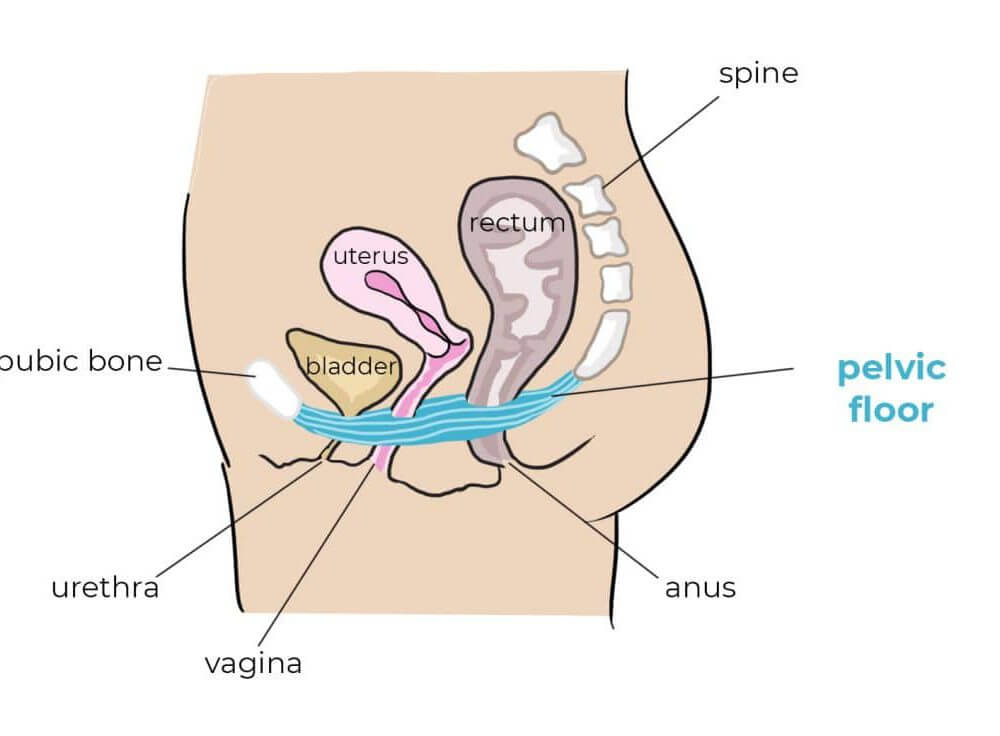
My pelvic floor: Learn more !
All people (women and men!) have a pelvic floor.

Pelvic Floor – what’s that?
The pelvic floor is a group of muscles which is located in the pelvis and stretch from the pubic bone (at the front) to the coccyx or tail-bone (at the back). You can compare your pelvic muscles to a hammock that surrounds and supports your pelvic organs.
The pelvic floor muscles consist of several layers of muscles, tendons and tissue. Women have 3 “orifices” in this area, also called “sphincters”, namely in the area of the urethra, the vagina and the anus.
The pelvic muscles play an important role:
…IN SUPPORTING THE PELVIC ORGANS:
the bladder, the vagina, the uterus
…IN MAINTAINING BODY FUNCTIONS REGARDING CONTINENCE:
Ensuring the closure of the urethra, the vagina and the anus.
…DURING SEXUAL INTERCOURSE:
Increase sensitivity and pleasure for both partners.
How does the pelvic floor work?
It is the contraction of sphincters which enables to partially or totally close the orifices. Tensing the muscles regulates the opening and closing of the different channels (urethra, vagina and anus).
Regarding the bladder for example, the pelvic floor closes the urinary sphincter. It regulates the closure of the urethra to prevent urine loss.
Why do I have urinary incontinence?
Perhaps the following situation sounds familiar to you: When you cough you have to pee or when you laugh you can’t control your bladder. Why is this happening? Normally, the pelvic floor is strong enough to ensure that there is no urinary leakage. Minor accidents happen when it is not sufficiently trained. Reasons for a sudden loss of bladder control can be, for example, a birth, which stretches and strains the pelvic muscles to a great extent. In this case, the sphincter no longer works properly. The weakened pelvic floor must then be strengthened again through training or so called Kegel exercises.

Better bladder control
Imagine your pelvic floor like a balloon and the sphincter like the orifice of the balloon. You hold the opening closed with your fingers because you do not want the air to escape. However, if you release the end, the air will escape. The same happens in our body: Thanks to our pelvic muscles, we manage to keep the urine in our bladder!
Prevent Urinary Leakage with Emy
Urinary leakage can occur for multiple reasons. For example, it can be caused by pregnancy or by menopause, because of tissue’s aging. To prevent this problem, it is essential to train our pelvic muscles throughout our life. There are many solutions – one of them will certainly suit you! What if you learned to control your pelvic muscles with Emy?
To download our free App Emy – Medical Kegel exercises:




